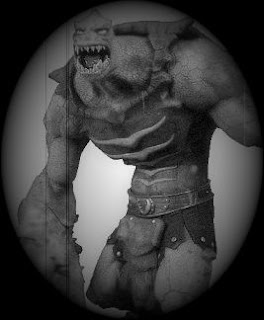“The face of evil is always the face of total need.”
- William S. Burroughs, Naked Lunch
The vampires which haunt
the City’s streets and prowl its night-spots are somewhat different from those which might be encountered in other places, other worlds.
First though, the similarities: they are indeed undead, and they must drink the blood of the living to survive. Specifically, the blood of living humans; the blood of other animals will stave off withdrawal, but won’t give them the high they crave, and leaves them in a weakened state. Like vampires elsewhere, they’re nocturnal hunters who can’t stand the light.
Unlike the cloaked, evil masterminds of some fiction (or the immortal brooders of other fiction), the City’s vampires are perhaps best analogized as addicts or junkies. A vampire in need of blood is afflicted by terrible physical and psychological symptoms of withdrawal. Whatever their moral or ethical feelings were in life (or even in their undeath), the need crippling need drives them to harm others.
In the early stages of vampirism (perhaps the first few weeks after they rise), most enjoy the “high” of blood-drinking. Many only take it from semi-willing victims they have seduced, and are often careful not to kill. Some may only need to ingest blood every other week at this stage. Over time, tolerance develops, and the amount of blood needed to hold off withdrawal becomes greater--as does their willingness to do almost anything to get it. Advanced-stage vampires may need to consume blood nightly.
This increased use takes its toll on their body. Nature abhors the vampire, and immune elements in the blood they ingest lead to the the development of sores on their undead skin. Older vampires often loose their hair and muscle mass, and have yellowed nails, teeth, and jaundiced whites of their eyes.
Eventually, they are either killed in their pursuit of blood, or their need develops to the point where they can no longer feed it, and rest throughout the day. At this elder stage, their metabolism seems to shut down. They may spend months, even years, in torpor, only rising for frenzied binges, then sleeping again. Some later stage vampires move to injecting blood rather than drinking it, as it takes less to generate the desired effect.
Vampires of the City possess most of the usual vampire powers when flush with blood, however within 4-5 days for young vampires, and perhaps only as little as a day for older ones, these powers fade to something approximately an undead version of their previous (living) capabilities. These vampires are not affected by holy symbols (unless, interestingly, the vampire was devout in life, and the symbol in question is the one of the vampire’s religion), nor running water. Sunlight does burn them, as does silver. Those with magical sight can see that vampires cast two shadows--one normal, and one which has a hazy appearance and a gauzy texture. In a mirror, the one “normal” shadow visible to everyone, can be seen to move independently of the being casting it.
Not all drained of life by a vampire become one (the chance is perhaps 1 in 4). It is unclear why some develop the curse and others do not.
Ghouls can be killed by vampires, but never rise.
There are said to be underground blood-parlors in certain parts of the City--decadent establishments which first appeared in the Old World, where younger vampires and vampire-wannabes gather to feed their mutual habits. There are also rumored to be procurers who find “fresh blood” for vampire clientele for a price.




































